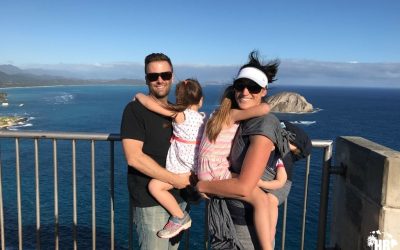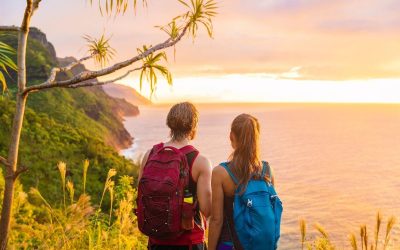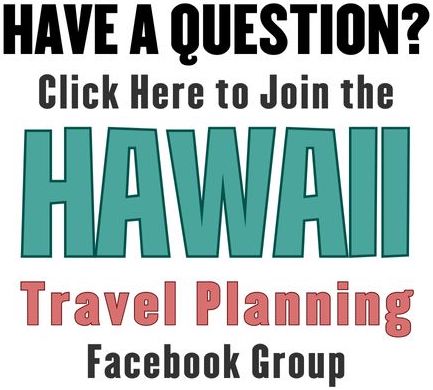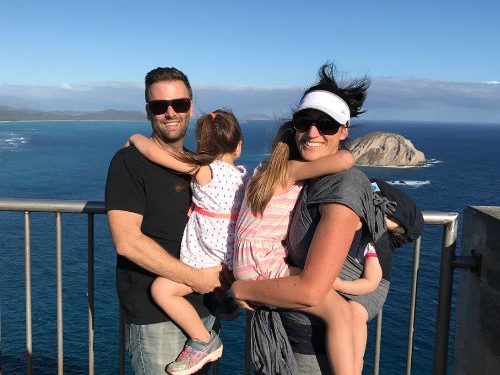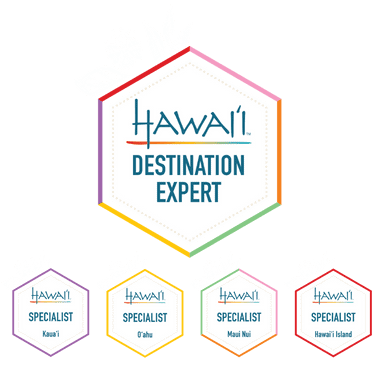Hanauma Bay Reservations Get Major Update with New Transportation System
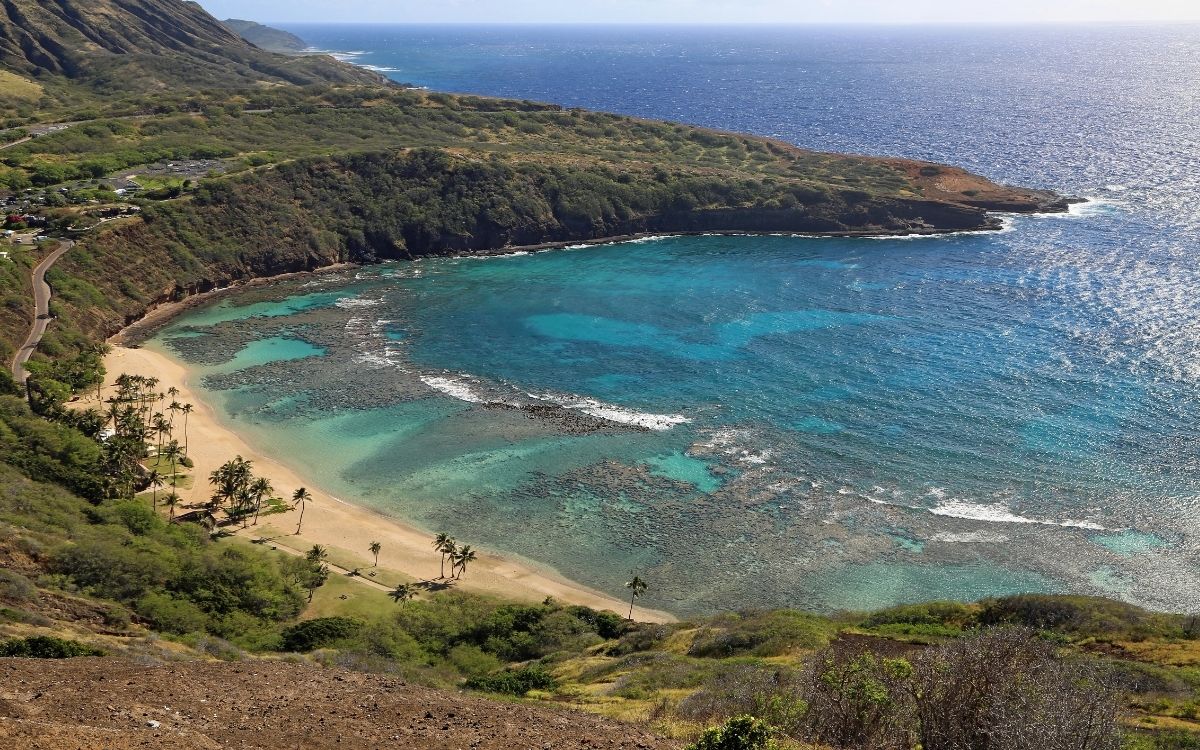
Effective November 1, 2025, the Hanauma Bay Nature Preserve on Oʻahu has rolled out a new transportation-and-booking system for non-resident visitors. This change is designed to streamline access while capping daily entries and protecting the marine environment. Non-resident visitors will now book bundled shuttle-and-entry packages under a partnership between the City & County of Honolulu and Roberts Hawai‘i, marking a major shift at Hawai‘i’s most-visited natural snorkeling destination.
Audio overview on Hanauma Bay Reservations
How the New Hanauma Bay Reservation System Works
Starting November 1st, visitors can make Hanauma Bay reservations through the official website 48 hours before their desired visit date. The preserve will cap non-resident visitors at 1,000 people per day, a significant reduction from the 3,000 daily visitors the bay has seen on its busiest days.
Of these spots, 720 are available for advance online booking. The remaining 280 spots are reserved for walk-up visitors who arrive without reservations. This split ensures spontaneous travelers still have a chance to experience the bay while encouraging advance planning.
City officials recommend booking early, especially during peak tourist seasons from December through March and June through August. Popular time slots are expected to fill quickly, particularly morning entry times when water conditions are typically best for snorkeling.
The 48-hour booking window prevents people from making speculative reservations months in advance. This approach helps ensure that available spots go to visitors who are genuinely committed to their visit dates.
Transportation Packages and Pricing Details
The new Hanauma Bay reservations include two package options with round-trip transportation from Waikīkī or Ala Moana. Both packages use electric buses, supporting Honolulu’s commitment to reducing carbon emissions and protecting air quality.
Hanauma Bay Package – $65 This includes electric bus transportation and preserve admission. Buses pick up visitors from convenient locations in major tourist areas, eliminating the need to rent a car or arrange rideshare services. The package covers the $25 non-resident admission fee plus transportation.
Hanauma Bay + Honolulu Zoo Package – $86 This combination ticket adds Honolulu Zoo admission to your bay visit, offering two attractions in one day. The zoo is located in Waikīkī, making it easy to visit both locations using the included transportation.
Both packages can be cancelled up to 48 hours in advance with a 10% cancellation fee. This flexible policy gives travelers peace of mind when booking their Hawaiʻi vacation activities.
The electric bus fleet represents a major investment in sustainable tourism infrastructure. These zero-emission vehicles reduce the preserve’s carbon footprint while providing comfortable, air-conditioned transportation for guests.
Benefits of the Packaged Transportation
The transportation component solves several long-standing problems for Hanauma Bay visitors. Parking at the preserve has always been limited, with spaces filling up by 8 or 9 AM on busy days.
Visitors who drove themselves often circled the parking lot for 30 minutes or more, wasting vacation time and fuel. Some gave up entirely and left without experiencing the bay.
The winding drive down Kalanianaʻole Highway to the preserve entrance can also be challenging for visitors unfamiliar with the road. The professional bus service eliminates this stress and allows everyone to enjoy the scenic coastal views.
For visitors without rental cars, the packaged transportation is especially valuable. Previously, getting to Hanauma Bay required expensive taxi or rideshare services, often costing $40-60 each way from Waikīkī.
What Stays the Same for Hawaiʻi Residents
Hawaiʻi residents continue to enjoy free admission to Hanauma Bay. Locals are not subject to the 1,000-person daily cap and don’t need advance reservations through the new system.
Residents must show valid Hawaiʻi identification at the entrance, including a driver’s license or state ID card. Military members stationed in Hawaiʻi with valid military ID also qualify for resident rates.
The educational video requirement remains in place for all first-time visitors, whether residents or tourists. Return visitors who have previously watched the video can proceed directly to the bay entrance.
Why These Reservation Changes Are Happening
Hanauma Bay has faced overcrowding issues for years, with up to 3,000 visitors on busy days. This heavy foot traffic damages coral reefs and stresses marine life in the protected bay.
The new reservation cap protects the bay’s delicate ecosystem. Marine biologists have long recommended limiting daily visitors to reduce coral damage and maintain water quality. Studies show that excessive visitor numbers lead to broken coral, increased sediment in the water, and disruption of fish behavior.
Traffic congestion on Kalanianaʻole Highway has also been a persistent problem. The two-lane highway serves residential neighborhoods and popular beaches along Oʻahu’s southeast coast. Hanauma Bay traffic often backs up for miles during peak hours, frustrating both tourists and local residents.
The packaged transportation system reduces private vehicle traffic by an estimated 500-700 cars per day. This benefits everyone who uses the highway and reduces parking demand at the preserve.
Learn more about Hanauma Bay’s conservation efforts on the official city website.
Educational Requirements Continue
All first-time visitors must watch a nine-minute educational video before entering the bay. The video teaches proper snorkeling techniques and reef protection practices that help preserve this fragile ecosystem.
Key rules include not touching or standing on coral, using reef-safe sunscreen, and maintaining distance from sea turtles and other marine life. Feeding fish is strictly prohibited, as it disrupts their natural behavior and diet.
The video also covers safety information, including how to identify strong currents and what to do if you encounter difficulties while snorkeling. This orientation has proven effective in reducing both environmental damage and visitor injuries.
Making Your Hanauma Bay Reservations
Visit the official Hanauma Bay website to book your spot. Reservations open exactly 48 hours before your visit date at midnight Hawaiʻi time (2 AM Pacific, 5 AM Eastern).
Have your credit card ready and know your preferred time slot. The booking system is first-come, first-served, so popular morning slots fill fastest. Entry times typically range from 7 AM to 1 PM.
If advance reservations are sold out, you can try for one of the 280 walk-up spots. Arrive early in the morning for the best chance of securing entry. Walk-up visitors should plan to arrive by 6:30 AM for the best odds.
The reservation confirmation will include your pickup location and time if you’ve booked a transportation package. Arrive at the pickup point at least 10 minutes early to ensure you don’t miss your bus.
What to Bring to Hanauma Bay
Pack reef-safe sunscreen, as traditional sunscreens containing oxybenzone and octinoxate are harmful to coral reefs. Many stores in Hawaiʻi sell reef-safe alternatives, or you can purchase them online before your trip.
Bring your own snorkel gear if you have it, though rental equipment is available at the preserve for an additional fee. A waterproof camera or phone case lets you capture underwater photos of the colorful fish and coral.
The preserve has no food vendors inside, so pack snacks and water. There are picnic tables and shaded areas where you can take breaks between snorkeling sessions.
Lockers are available to store your belongings while you’re in the water. Bring a few dollars in cash or a credit card for locker rentals and equipment rentals if needed.
What This Means for Your Hawaiʻi Trip
Plan ahead when visiting Hanauma Bay. The new reservation system requires booking 48 hours in advance, so add this to your itinerary early in your trip planning process.
The $65 package actually saves money compared to renting a car for the day, paying for parking, and buying separate admission. Plus, you avoid the stress of finding parking on busy days and navigating unfamiliar roads.
If you’re a Hawaiʻi resident, your access remains unchanged. Bring your valid ID and enjoy free admission without worrying about the daily cap or reservation requirements.
Consider booking the combination package with Honolulu Zoo admission if you’re traveling with children or want to maximize your day. The zoo features tropical animals and botanical gardens, making it a nice complement to your beach day.
Traveler Tip: Set a reminder on your phone for exactly 48 hours before your desired visit date. Log into the reservation system right at midnight Hawaiʻi time to secure the best time slots. Morning visits between 7-9 AM offer calmer waters, better visibility for snorkeling, and cooler temperatures. The bay can get choppy in the afternoon, especially during winter months. Don’t forget to pack reef-safe sunscreen and an underwater camera to capture your experience at one of the world’s most beautiful marine preserves. If you wear prescription glasses, consider getting a prescription snorkel mask for the clearest views of the underwater world. Finally, take your time in the water and float calmly to avoid kicking up sand or accidentally touching coral.
RECOMMENDED POSTS
Hawaiian Roll Ham Sliders: The Best Easy Recipe (4 Variations)
This post may contain affiliate links, meaning I earn a small commission if you use the links. View our Privacy Policy and for more.RECOMMENDED POSTS
7 Completely Free Things to Do on Oahu with Kids
[dssb_sharing_buttons icon_placement="icon" columns="2" _builder_version="4.24.3" _module_preset="default" box_shadow_style_icon="preset1"...
Hawaii 2026 Travel Changes You Need to Know
[dssb_sharing_buttons icon_placement="icon" columns="2" _builder_version="4.24.3" _module_preset="default" box_shadow_style_icon="preset1"...
Bryan Murphy is the creator of Hawaii’s Best Travel and a Certified Hawaii Destination Expert through the Hawai‘i Visitors Bureau. He’s an active member of the Hawai‘i Visitors and Convention Bureau and continues ongoing education focused on Hawaiian culture, history, and sustainable travel. As the host of the “Hawaii’s Best Travel” podcast—one of the top travel podcasts in the U.S.—Bryan shares practical, respectful guidance to help visitors experience Hawai‘i in a more meaningful way. His work reaches nearly half a million people across podcast, blog, and social media.



